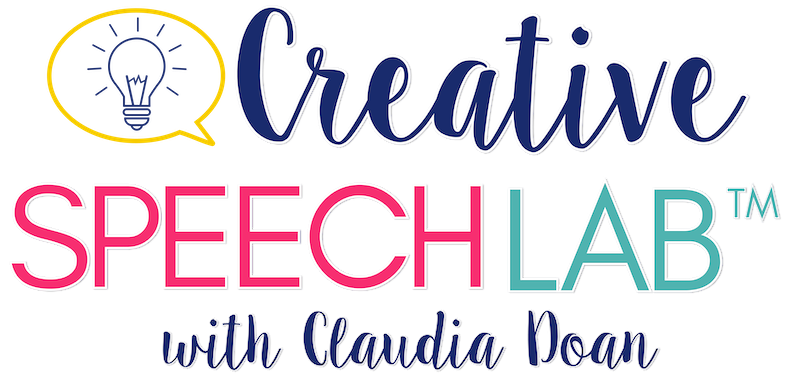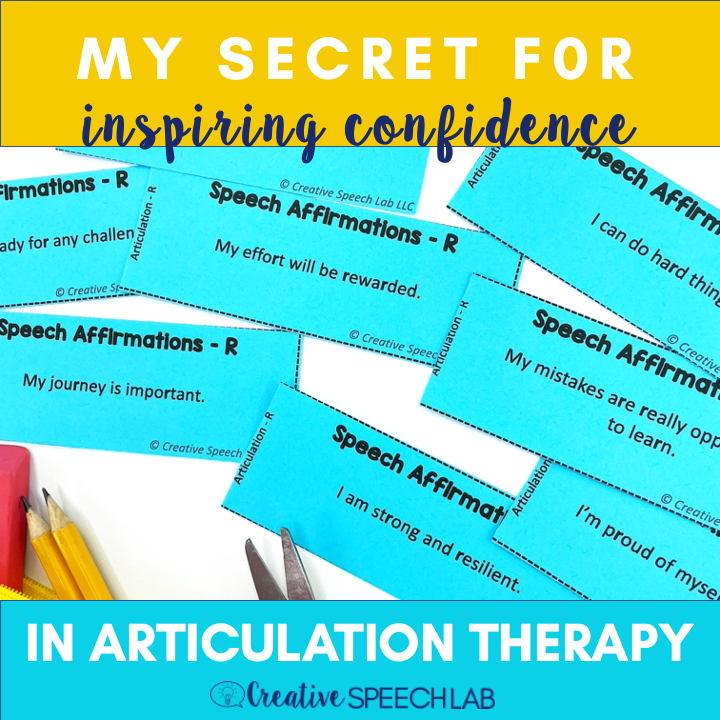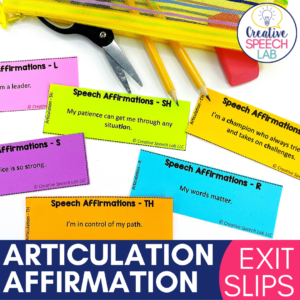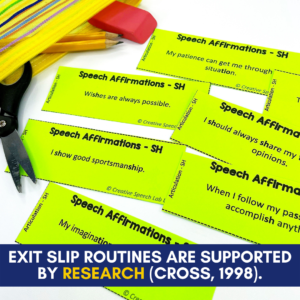It can sometimes be challenging to help students feel confident and motivated when they’re trying to master their speech goals during articulation therapy. Oftentimes, so much practice and perseverance are required to make just a little bit of progress and that can leave kids needing a lot of extra pep-talks.
Well…what if we embed our pep-talk into their practice?
Here’s my secret…
During articulation therapy, rather than asking our students to read random R sentences such as:
“The brown squirrel rapidly ran by the raccoon.”
try sentences that encourage them, like:
“My mistakes are really opportunities to grow and learn.”
Why not turn the sound-loaded sentences they’re practicing into words of encouragement? These Articulation Affirmation Exit Slips provide a research-based way for your students working on R, S, L, Sh, Ch and Th to practice encouraging sentences on repeat!
Here’s how the exit slip routine works:
- At the end of each session, ask your students to take a slip focusing on their sound and practice it. (This quick routine at the end of each session reinforces skills learned and helps to facilitate self-monitoring and carryover).
Alternatively, these exit slips can be sent home for homework practice that feels less overwhelming and more encouraging than other articulation therapy homework options!
This set of 56 articulation affirmation exit slips:
- Focuses on R, S, L, Sh, Ch, Th and mixed sounds
- Is clearly labeled by target sound
- Incorporates SEL incidentally
- Facilitates a routine that is supported by research (Cross, 1998)
Although this articulation therapy strategy is simple, I believe that when students repeat encouraging messages to themselves as they persevere, they’ll become stronger, more resilient and confident! Let me know if you try it out!
Cross, K. P. (1998). Classroom research: Implementing the scholarship of teaching. In T. Angelo (Ed.),Classroom assessment and research: An update on uses, approaches, and research findings (pp. 5–12). San Francisco:





